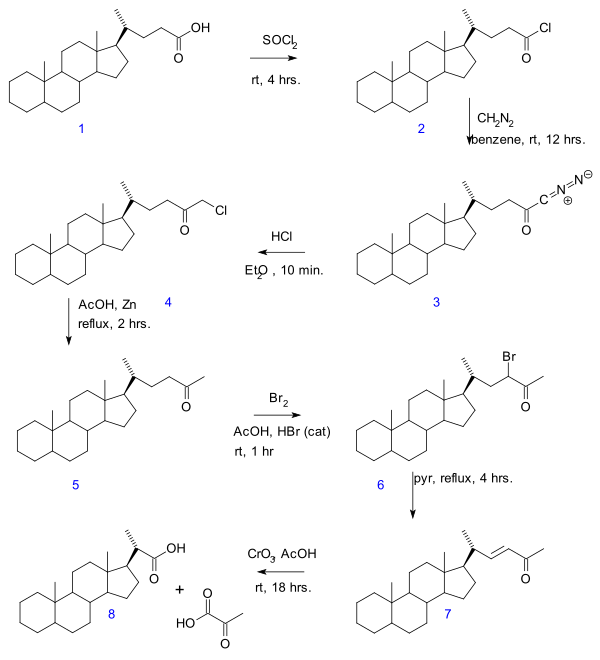

Inorganic chemistry, a homologation reaction, also known as homologization, is any chemical reaction that converts the reactant into the next member of the homologous series. A homologous series is a group of compounds that differ by a constant unit, generally a methylene (−CH2−) group. The reactants undergo a homologation when the number of a repeated structural unit in the molecules is increased. The most common homologation reactions increase the number of methylene (−CH2−) units in saturated chain within the molecule.[1] For example, the reaction of aldehydesorketones with diazomethaneormethoxymethylenetriphenylphosphine to give the next homologue in the series.
Examples of homologation reactions include:
Some reactions increase the chain length by more than one unit. For example, the DeMayo reaction can be considered a two-carbon homologation reaction.
Likewise the chain length can also be reduced:

